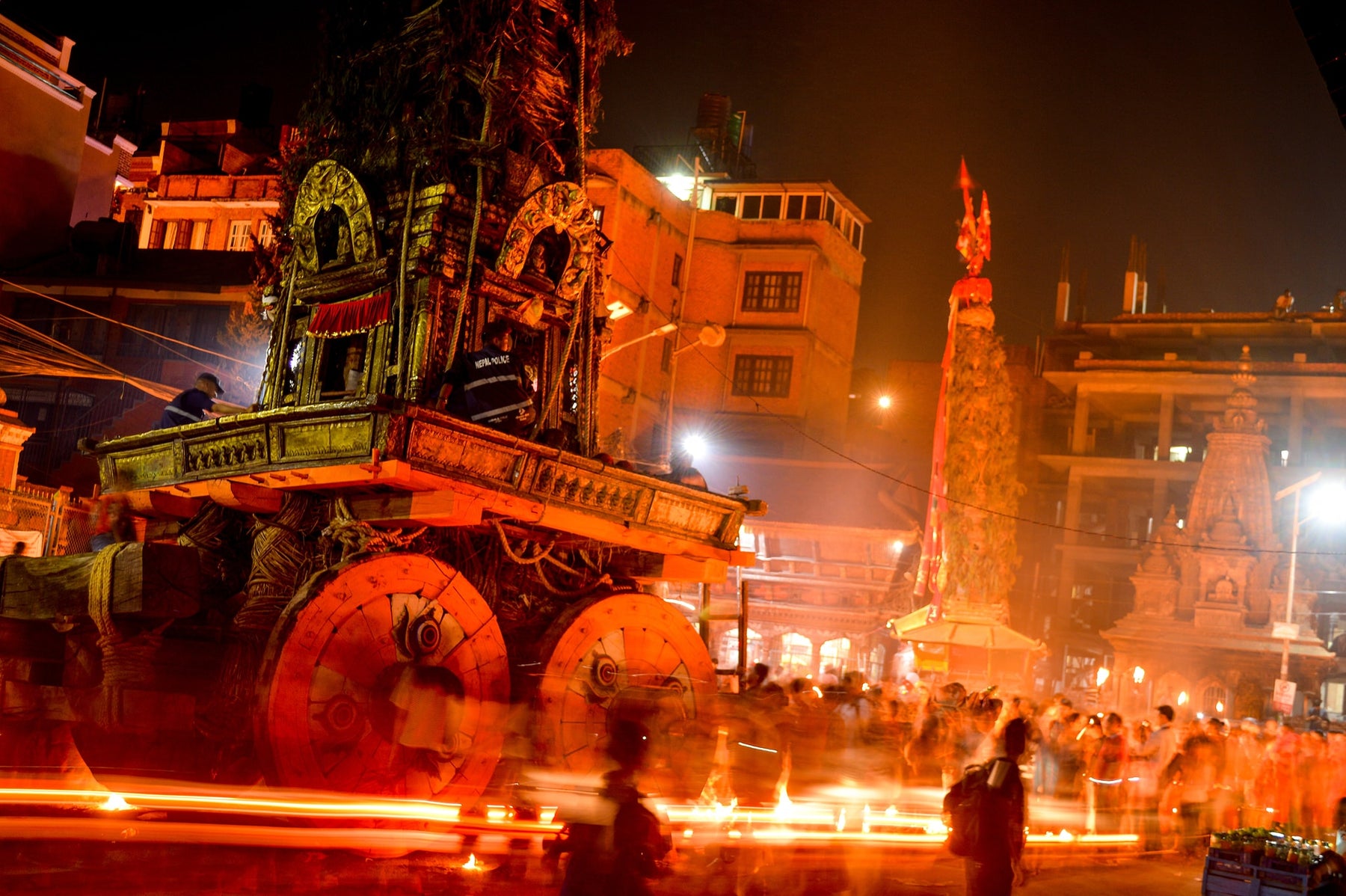
Rato Machhindranath Jatra biggest Socio Cultural Newari Events
Rato Machchhendranath Rath Jatra: Bhoto Jatra
Rato Machchhendranath Rath Jatra is one of the biggest socio-cultural events of Newari community that is celebrated every year (May-June) in Patan, Nepal. It is a month long celebration that is devoted to the Rato Machchhendranath, the “Red Fish God”, which signifies to be the god of rain, where Rato is red, Machchhendra is the fish and Nath is God.

image: https://www.facebook.com/ratomachhindranathjatra/photos/a.835117026515575/2684880568205869/?type=3&theater
During the festival, the wheeled chariot of a deity known as Bungdyo or Red Machchhendranath is made at Pulchowk. The chariot is very massive, as it is 60 feet tall and is fabricated from bamboo poles, which is then dragged through the city of Patan in several stages till it reaches the appointed destination, Lagankhel.
The very important day of this Jatra is the “Bhoto Jatra”, which is the last day of this festival. During this particular day, a Bhoto is shown in public, and is known to be “Bhoto Dekhaune” that is “showing the vest”. Moreover, the ceremonial act of showing the vest has its own cultural and historical significance among the people of Patan, especially within the Newari communities.
It is believed that during the rule of King Gunkampdev, a farmer, who was also a physician lost his Bhoto, which was decorated with many precious diamonds. It was a gift and a reward that he received from snake-king, Karkotak, for medicating his wife, who was going through a terrible eye pain.
However, as the Bhoto was very dazzling and eye-catchy, it caught the attention of everyone, to which it came to a notice of a ghost, and began to envy it. He then started following the farmer wherever he went, and on a one particular day, he stole it from the farmer.
The farmer, on the other hand, tired his best to catch the thief but failed to do so. However, during the time of Rato Machchhendranath Jatra, he caught the ghost and started having a fight and an argument with the ghost, to take his Bhoto back. However, due to their loud argument, along with many other people present in the Jatra, the King Gunkampdev’s attention got driven towards them. Thus, the king tried to investigate the situation, where, both the parties gave their explanation, yet failed to provide the proof to their words. Hence, the king gave them the ultimatum, and promised to give the Bhoto to one who will be able to provide the proof by the finale of the Jatra.

bundyo rato machindra nath
sundhara 📷 @utsav shrestha
https://www.facebook.com/ratomachhindranathjatra/photos/a.835117026515575/2688851274475465/?type=3&theater
Later, the farmer went to the snake-king and told the entire story to him, and requested to come at the end day of the Jatra so that he could claim to get his Bhoto back with a proof. And as the last day of the Jatra came along, the Bhoto was displayed by the priest among the crowd from all the four corners of the chariot, and asked repeatedly: “Who does the Bhoto belongs to?” Yet, no one answered, because the farmer was unable to find the snake-king in that crowd, hence he ended up waiting for the snake-king and became unable to have any proof. Likewise, nor did the ghost arrived in the event, with any proof to claim the Bhoto.
Therefore, the Bhoto remained within the priest and from that period, every year a trend and the ritual got started to showcase the Bhoto among the public, which still continues to be the part of the Rato Machchhendranath Jatra.

image @day 2 mangalbazar
pc : Zyâpü Nış-zál Mâhzn https://www.facebook.com/ratomachhindranathjatra/photos/a.835117026515575/2677378638956062/?type=3&theater
Lastly, as any other Jatras celebrated in Nepal, Rato Machchhendranath Jatra also has a very high significance in Nepalese society. As, it has been a big part of the culture, and is celebrated with lots of enthusiasm and motivation among the people, to which every year during the final celebration of this Jatra, on the day of Bhoto Jatra, a public holiday is given by the government within the Kathmandu valley. Hundreds of the people join together to follow the chariot and, many other countless people arrive to see the glimpse of the Bhoto and show their devotion towards the culture and the history that Rato Machchhendranath Jatra carries.

Leave a comment